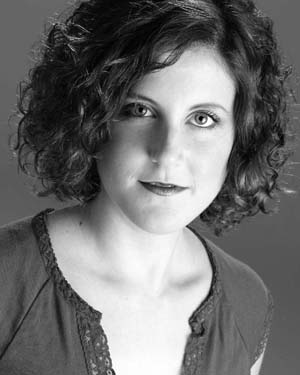The Ivey Essay: Beyond Beginning, Middle, and End
Jaime Kleiman explores experimental theater for this series of essays, sponsored by the Ivey Awards in their first year and reprised here. The 2007 Ivey Awards will be Monday, September 24.

It’s happened to most of us at least once: you’re sitting in your theatre seat wearing your Friday evening best, excited to be watching the Highly Acclaimed Experimental Theatre Troupe from England – perhaps courtesy of the Guthrie’s World Stage Series – and, about ten minutes into the “show,” you start to get annoyed. You feel ripped off, played for a fool, and even a little stupid. Truth be told, you have absolutely no idea what’s going on, and during intermission, you actually leave the theatre, which is something you haven’t done since sixth grade when you snuck out of the school assembly to smoke a cigarette in the boys’ bathroom.
Unfortunately, this experience (okay, maybe you didn’t leave the theatre) is a very common one to have while watching an experimental theatre piece. Sometimes the show is actually awful, but sometimes you just need to do a little extra work to contextualize it. As the first-ever Ivey Awards approach, it’s important that we learn to appreciate what experimental theatre is, and in the process, maybe even learn to like it.
What is it and why is it?
It’s hard to say exactly when “experimental” theatre began; I like to reference the Dadaists and Futurists myself. Tired of all the stuffiness in the art world at the beginning of the twentieth century, people like Marinetti and Breton started doing horrible things with sounds and words and urinals. They caused riots with their lack of plot, structure, and sentences. Paris was outraged, the visual art world was stunned.
In America in the 1960s, people like Yoko Ono, Maria Irene Fornes, Meredith Monk, The Wooster Group, Richard Foreman, and Ellen Stuart of La MaMa E.T.C. started getting just as funky. In the 60s, a loft in Soho cost about $100 a month to rent, and a lot of these soon-to-be famous artists lived together and ate sticky rice with their fingers and made art together. They experimented with video, dance, movement, and words. They deconstructed ideas and put them back together again, but what they found was – and this is most important – that when they tried to reconstruct that which they mentally (and sometimes physically) dissected, it didn’t go back together exactly the same way. This deconstructionist, postmodern viewpoint is the foundation from which most experimental theatre springs.
Imagine that you broke a vase on purpose, and then glued the thousands of tiny shards back together into a vase-like shape. Chances are, this thing would not look like a vase as we know it. It would be tilted and cracked and have miniscule holes in it. This vase would not be functional, but it might look cool. And, as you were tediously and meticulously gluing all the pieces back together, you may have learned something about life. This new vase may also serve another, new purpose, one that was not evident when it was doing its prescribed job.
That’s one way of looking at postmodernism.
Another way to look at postmodernism in performance is to imagine a horizontal line. This line represents Aristotelian structure:
Beginning (intro to conflict & characters) ‡Middle (climax, denouement, resolution)‡End (conclusion)
Well, what started happening in the 60s was that someone asked, “Hey, this linear narrative stuff is not reflecting my life experience. Is there a way to make performance work that reflects the experience in my head?” “What is dance? If I sit here in front of you and wiggle my toes with intent, is that the same thing as leaping through the air in a tutu?” “What is art?”
Suddenly, the straight narrative line wasn’t a line anymore. Sometimes it became a circle, and other times a spiral, piloting around and around itself down its own philosophical hole. For some experimental artists, ambience and mood became more important than plot. Characters were replaced by archetypes. Pliés were replaced by Meredith Monk and Mary Overlie in Judson Church, climbing over boxes and repeating words like, “I feel. I am. I feel alone.”
Experimental theatre is, at its core, a way of asking questions and searching for answers that you wouldn’t necessarily do (or want to do) with in a more conventional setting. It is about asking questions that conventional theatre doesn’t always or can’t ask. It’s about taking risks, incorporating other elements of theatricality, mixing genres, and introducing stark realism and whimsical symbolism within the same space. It’s about exploring space. It is about trying new things, even if they don’t work.
Many theatre artists who work in experimental theatre care more about process than they do about product; I personally think the ideal is somewhere between the two – so that when you do see a highly acclaimed experimental theatre piece, you don’t want to leave in the midst of it, no matter how incomprehensible it may seem. Theatre is about the relationship between performer and audience, and a show – any show – that doesn’t honor that relationship is holding back on you.
Ultimately, any piece of theatre – and whether or not you like it – is a matter of personal taste. Like wine, experimental theatre is an acquired one, but well worth the effort. Whether you know a lot about it or a little, you must trust your instincts, and by all means, if, like a Kazimir Malevich painting, you like it but have no context for it, sit back, enjoy the show, and try to engage your date in a rousing discussion afterwards. I think you’ll be glad you did.